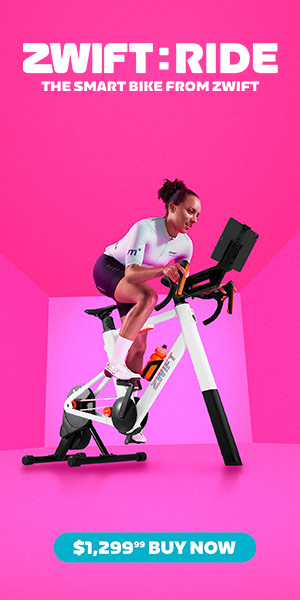Important: this post contains performance data which was invalidated in Zwift’s mid-March 2025 update. Learn about those changes and get updated performance data >
Our performance test charts for wheels and frames have become a popular tool for Zwift racers, and today we’re releasing another way to view the data: scatter plots.
This style of chart lets you quickly see which wheels and frames are top performers on climbs, flats, or both. Just mouse over a plot point to find out which wheelset or frame it represents.
If you’re looking for the best performers, you want items that are lower on the chart (indicating a faster climb time) and further left (indicating a faster flat test time). This means we have a top performer “inner curve” running from the top-left to the bottom-right of each chart. We’ve enlarged the plot points for these frames and wheels so they’re easy to pick out.
These enlarged points are the fastest wheelsets and frames available, but they are top performers in different ways: those lower on the chart are better climbers and less aero, while those nearer the top are more aero, but slower climbers.
Wheel Performance Scatter Plot
There are four definite “performance bands” visible here, running diagonally from upper-left to lower-right. You have the top performers (the enlarged points, plus those nearby), a group close to those top performers, a middle group, and the slow wheels.
Frame Performance Scatter Plot
This chart doesn’t break into easy visual performance bands, but there are three noticeable vertical groupings of frames with the exact same flat performance time (at 3093, 3094, and 3095 seconds). These three groups comprise 22 different frames from the total universe of 50. Our guess is most of these grouped frames share the same CdA value in Zwift, but slightly varying weights.
To keep the chart user-friendly, the two slowest climbers have not been included. Here are their timings:
- Zwift Buffalo (3106, 3065.5)
- Zwift Safety (3097, 3006.5)
TT Frame Performance Scatter Plot
There are a few clear leaders here, with the ideal choice varying based on terrain.
About the Performance Tests
- Flat tests run on 2 laps of Tempus Fugit at 300 watts steady with an isolated 75kg rider 183cm tall, using basic Zwift 32mm Carbon wheels.
- Climb tests run on Alpe du Zwift using 300 watts steady with an isolated 75kg rider 183cm tall, using basic Zwift 32mm Carbon wheels.
Where the Tron?
This is a question we always get when we publish performance charts for wheels and frames. Unfortunately, the Tron bike comes as a unit – the frame and wheels cannot be separated for testing purposes. We could include it on the charts above, but it wouldn’t be very useful, since the charts above aren’t displaying top-performing wheel and frame combinations. Rather, they display top-performing wheels on one chart, and top-performing frames on the other.
The Tron would simply appear as a top-performing outlier on both charts, but that wouldn’t give you a full picture of Tron performance, since we know that combining a top-performing frame+wheelset will give you a setup which is competitive or even faster than the Tron bike. To graph the Tron in a useful way, the other graph points would need to consist of top-performing wheel+frame combinations.
So we’ve done just that. Check out our popular Tron vs Top Performers Scatter Plot!
Questions or Comments?
We’ll be adding these charts to our main chart pages soon. Got questions or comments? Share below!
